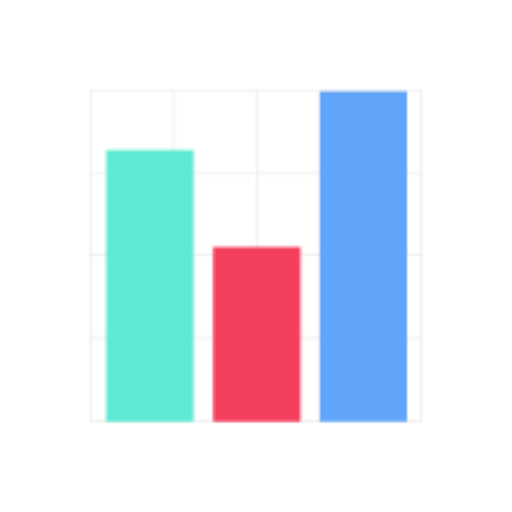Telling Stories with Data-data storytelling and visualization tool
AI-powered data storytelling for all.
Explain 'Plan and sketch an endpoint' from the book.
What does the book say about preparing data?
How does the book suggest sharing data findings?
What does summarise() do?
How do I use mutate()?
Related Tools
Load More
Plot AI
Specialized in the Art of Data Visualization, with a Focus on Bioinformatics Applications. Now comes with DNA Barcode Generator. **constantly updating**

Data Visualization Expert
A data viz expert specialized in creating charts and graphs from user-provided data with the knowledge to apply best practices for visual encoding, accessibility, and offer contextual suggestions for visualization types based on the provided data and inte

Data Visualizer 👉 Graphs 👉 Charts
Creates data visualizations, graphs, and charts.

Story Telling
Generates cohesive visuals and guides story development.

Insightful Infographics
Data wizard for visual storytelling

Data Storytelling Expert
I help you transform confusing data into a story that creates clarity & inspires action
20.0 / 5 (200 votes)
Introduction to Telling Stories with Data
Telling Stories with Data is a comprehensive guide designed to help individuals and organizations turn raw data into compelling narratives that inform and influence. It revolves around a workflow that incorporates planning, data acquisition, modeling, and communication. The aim is to teach data scientists, researchers, and analysts how to craft stories that resonate by following reproducible and ethical practices. The core of this book is focused on building robust workflows and reproducible knowledge using tools like R, Quarto, Git, and GitHub. This is particularly relevant for those handling human-centered data, with a strong emphasis on highlighting social inequities often missed in datasets【5:4†source】【5:18†source】.

Key Functions of Telling Stories with Data
Reproducible Workflows
Example
By utilizing tools such as Quarto and Git, the book enables the creation of reproducible projects where data collection, cleaning, analysis, and communication are streamlined.
Scenario
For instance, a data science team in a research institute can use these workflows to ensure that their results can be easily replicated, reducing errors and building trust with external collaborators【5:4†source】.
Static Communication
Example
This section discusses how to effectively communicate findings through static graphs, tables, and maps to present data in a clear and convincing way.
Scenario
A researcher analyzing public health data might use this function to create bar charts or scatterplots that visualize the spread of a disease, enabling policymakers to make informed decisions based on visual evidence【5:2†source】.
Ethical Data Science
Example
The book integrates ethical considerations into all stages of the workflow, ensuring that data stories respect the people behind the data and acknowledge those excluded.
Scenario
An organization working with sensitive population data can follow these guidelines to ensure that marginalized groups are represented ethically and that their analysis does not perpetuate inequities【5:13†source】.
Ideal Users of Telling Stories with Data
Data Scientists and Analysts
These professionals will benefit from the structured workflows and reproducibility principles laid out in the book. It helps them develop rigorous, repeatable analysis that can stand up to scrutiny in academic, governmental, or private sector settings.
Researchers and Academics
For individuals in academic research, this book provides a clear path from raw data to publication-quality findings, focusing on ethical research practices, reproducibility, and effective communication. It’s particularly useful for those looking to build a portfolio of reproducible work【5:4†source】.

How to Use Telling Stories with Data
1
Visit aichatonline.org for a free trial without login, no need for ChatGPT Plus.
2
Download and install R and RStudio, which are essential for following along with the book's exercises. Ensure Quarto is also installed for documentation.
3
Familiarize yourself with the book's workflow, which consists of planning, simulating, acquiring, modeling, and communicating data to create compelling data narratives.
4
Engage with the interactive exercises in each chapter, as they are designed to build practical skills for data manipulation, visualization, and storytelling.
5
Apply the book’s reproducibility practices, using version control with Git and GitHub to ensure your work can be easily shared and verified.
Try other advanced and practical GPTs
Sembot
AI-powered sales data insights

3Blue1Brown GPT
AI-powered math explanations, simplified.

Bjorem Speech® Assistant
AI-powered guidance for effective speech therapy.

Dall.E Prompt Generator
Unleash Creativity with AI-Powered Prompts

Olas Trader Agent Guide
Empower your trading with AI-driven precision.

英語文法/表現チェッカー
AI-powered tool for perfecting English writing
GPT Chat 3 5
AI-Powered Assistance for Every Need

Open A I Gpt 3.5
AI-driven solutions for your text-based needs

Anti Detection
AI-powered content anti-detection tool

CodeConverse
AI-powered code development tool

Survey Crafter
AI-Powered Tool for Effortless Surveys

🎨 Art 2 Cart 🛒
AI-powered creativity for your products.
- Data Analysis
- Data Visualization
- Statistical Modeling
- Reproducible Research
- Ethical Data
Detailed Q&A on Telling Stories with Data
What is the main focus of the book?
Telling Stories with Data focuses on the full workflow of turning raw data into meaningful narratives using statistical tools and R programming. It covers planning, simulating, acquiring, modeling, and communicating data.
Who is this book intended for?
The book is intended for readers with a basic understanding of statistics, but it is also accessible to beginners with no prior coding or data experience. It is designed for students, academics, and professionals interested in data storytelling.
What software is required to follow the book?
R and RStudio are essential for working through the exercises and workflows in the book. Quarto is also recommended for creating reproducible reports, and Git/GitHub for version control and collaboration.
How does the book approach data ethics?
The book integrates ethical considerations throughout, especially focusing on respecting the individuals behind the data and addressing social inequities in data representation and analysis.
How does the book promote reproducibility?
Reproducibility is emphasized through the use of tools like Quarto, version control systems like Git, and RStudio’s project structure. The book stresses the importance of making data workflows transparent and shareable.